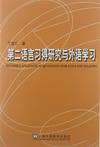第二语言习得研究与外语学习
出版时间:2004-4-1 出版社:上海外语教育出版社 作者:丁言仁 页数:256
Tag标签:无
内容概要
第二语言习得研究短短四十年的发展历史却集中了众多跨学科研究领域内学者们激烈的讨论,其中包括有关第二语言的习得过程,限制这一过程的外因与内因,以及第二语言教与学的关系、实现方法等。. 在这本专著里,作者针对国内第二语言教学中存在的问题以及教师、学生对这一学科在理论与实践方面的疑惑,重点选择了与此相关且极具影响力的某些理论和假说,就其产生原因、在学科中的地位和作用、之间的相互关系、对教学的启迪等问题进行了深入浅出、精辟生动的阐述与分析。.. *用词简明生动,却能够归纳和阐述像乔姆斯基那样晦涩难懂的语言理论。 *图形、图表、测试和练习等多种形式的应用使理论形象化,帮助读者摆脱枯燥的说理,强化理解。 *科学的分析方法,通过采取对不同理论进行横纵对比、对同一理论进行正反对比,避免了以偏概全。 *吸取最新研究成果,尤其是青年学者活跃思想的结晶于自己的见解、看法之中两者丝丝入扣,相得益彰。...
书籍目录
chapter one puzzles in sla . 1.1 a recent acronym 1.2 sla as a field of learning 1.3 issues for exploration 1.3.1 description 1.3.2 explanation 1.3.2.1 external factors 1.3.2.2 internal factors 1.4 the organization of this book 1.5 the use of this book chapter two the influence of behaviorism 2.1 the "interference" of l1 2.1.1 pronunciation 2.1.2 syntax 2.1.3 semantics and pragmatics 2.2 the behaviorist understanding of sla 2.2.1 "rat psychology" 2.2.2 the audio-lingual method 2.3 contrastive analysis 2.3.1 its strong form and weak form .2.3.2 decline in popularity 2.4 criticism from empirical research 2.5 conclusion chapter three the "chomskyan revolution" 3.1 introduction 3.2 chomskyan linguistics 3.2.1 response to behaviorism 3.2.2 abc of universal grammar 3.2.3 the innateness hypothesis 3.2.4 the hypothesis-testing hypothesis 3.2.5 a simple chronology 3.3 criticisms of chomskyan linguistics 3.3.1 piaget's debate with chomsky 3.3.2 the criticisms that never go away 3.4 interlanguage hypothesis 3.4.1 the coining of the word 3.4.2 insights from fla research 3.5 error analysis chapter four natural order and comprehensible input 4.1 introduction 4.2 natural order hypothesis 4.3 morpheme studies and their findings 4.3.1 finding the acquisition sequence 4.3.2 some specific findings 4.3.3 pienemann's study 4.4 problems with error analysis and morpheme studies 4.5 comprehensible input hypothesis 4.5.1 the "i+1" theory 4.5.2 flaws in krashen chapter five variability in performance and acquisition 5.1 introduction 5.2 variability in l1 use 5.2.1 labor vs. chomsky 5.2.2 social dialects of new yorkers 5.3 variability in l2 learner language 5.3.1 rod ellis study (1987) 5.3.2 foster and skehan study (1996) 5.4 role of variability in sla 5.5 learner variation 5.5.1 age 5.5.2 cognitive style 5.5.3 personality 5.5.4 attitudes and motivation 5.5.5 aptitude 5.6 research into the origin of aptitude: a conclusion chapter six input and interaction 6.1 introduction 6.2 terminology 6.3 input and interaction in l1 acquisition 6.4 input and interaction in natural settings 6.4.1 foreigner talk 6.4.2 the ft controversy 6.4.3 ways of meaning negotiation 6.5 input and interaction in classroom settings .. 6.6 effects of input and interaction on sla 6.6.1 the frequency hypothesis 6.6.2 the vertical constructions 6.6.3 the learning of formulaic sequences 6.6.4 the interaction hypothesis 6.7 criticism of the interaction hypothesis 6.8 swain's output hypothesis 6.9 empirical studies on the role of interaction 6.9.1 studies by rod ellis et al. (1994, 1995) 6.9.2 the lyster and ranta study (1997) chapter seven learner strategies 7.1 introduction 7.2 difficulty with definition 7.3 production strategies 7.3.1 planning and monitoring 7.3.2 the strategy of using formulaic language 7.4 communication strategies 7.4.1 achievement strategies 7.4.2 reduction strategies 7.4.3 some comments 7.5 learning strategies 7.6 the role of memorization strategies chapter eight noticing the native spearer selection 8.1 introduction 8.2 the noticing hypothesis 8.2.1 background 8.2.2 explaining the "wes phenomenon" 8.2.3 the use of compensatory strategy 8.3 effects of the noticing hypothesis 8.3.1 the role of instruction 8.3.2 impact on empirical research 8.4 noticing the native speaker selection 8.5 a new model of language chapter nine developing l2 literacy: reading 9.1 introduction 9.2 mainstream approaches to literacy development 9.2.1 reading by ear or by eye 9.2.2 the bottom-up model 9.2.3 the top-down model 9.2.4 the interactive model 9.2.5 influence on l2 reading instruction 9.3 post-modernist approaches: recent development 9.3.1 critical literacy 9.3.2 reader-response theory 9.4 reading for meaning vs. reading for l2 learning chapter ten developing l2 literacy: writing 10.1 introduction 10.2 l2 writing. process and product approaches 10.3 l2 writing as compared to l1 writing 10.4 the bandwagon of contrastive rhetoric 10.4.1 culture-dependent "thought patterns" 10.4.2 problems with the research 10.4.3 causes of l2 rhetorical problems 10.4.4 attraction to learners and teachers 10.5 developing l2 literacy skills 10.5.1 inadequacy of the pipeline model 10.5.2 writing as reader references index ...
图书封面
图书标签Tags
无
评论、评分、阅读与下载
用户评论 (总计4条)
- 喜欢读
- 上课用的教材,印刷挺清晰的。
- 内容浅显易懂,深入浅出,虽然全英文,但看起来几乎不会有阅读障碍,不错
- 一般~~~
